Writing & Compilation: Karen, Foresight News
In the last Ethereum execution layer meeting, Ethereum core developers designated EIP-7514 as part of the Dencun upgrade, aiming to slow down the growth rate of validators and reserve more time to study the future of Ethereum staking and solutions.
According to data from beaconcha.in, the current Ethereum staking amount has reached 25.84 million ETH, an increase of over 90% from about 13.5 million ETH before the merge (September 15, 2022), while the number of active validators has increased from 490,000 to over 800,000.
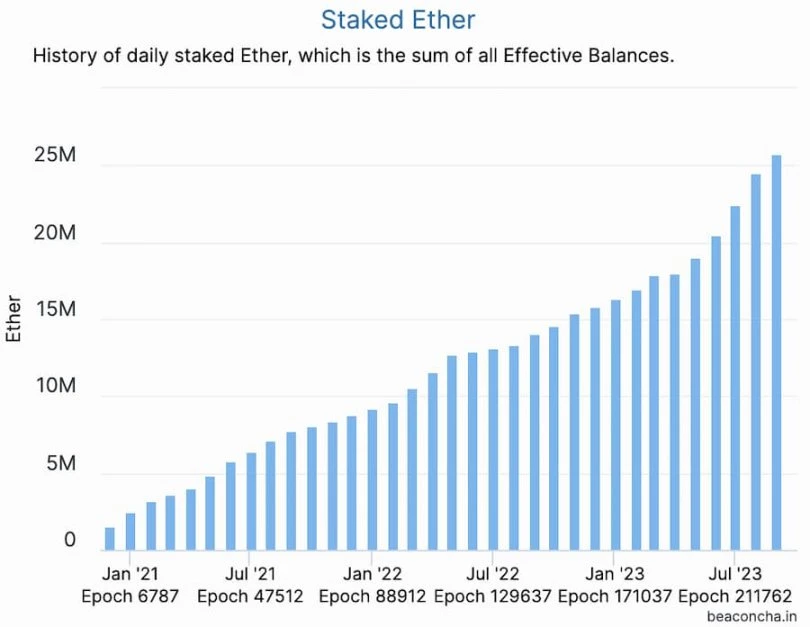
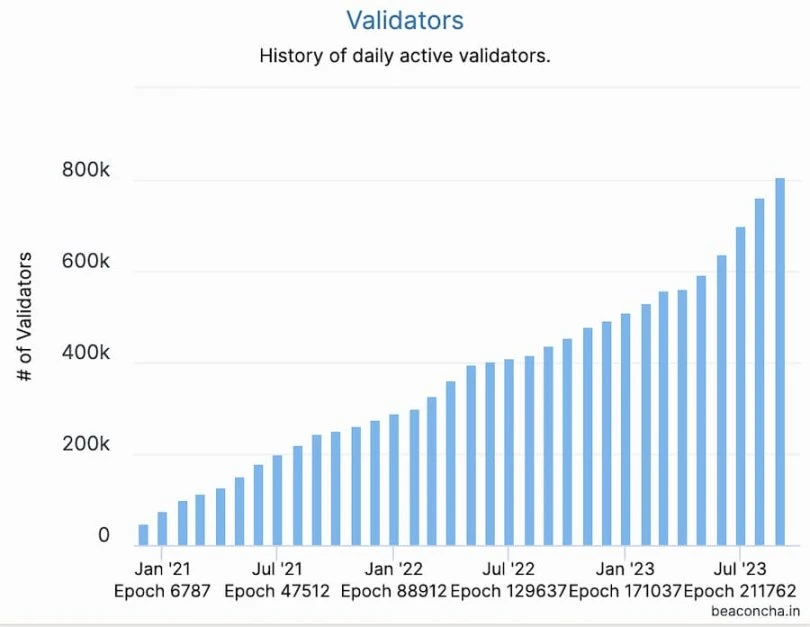
Source: beaconcha.in
Equally noteworthy is that there are currently over 28,000 validators in the queue, with an additional 621 validators waiting to exit.
What is EIP-7514? Why was it proposed?
As Ethereum Foundation researcher Dankrad Feist stated, the Ethereum validator set is rapidly increasing. Additionally, Lido currently dominates the field of liquid staking, holding nearly one-third of all staked ETH and showing no willingness to self-restrain, which could pose a risk to Ethereum's decentralization. Furthermore, governance attacks on Lido could also pose serious problems for the Ethereum network.
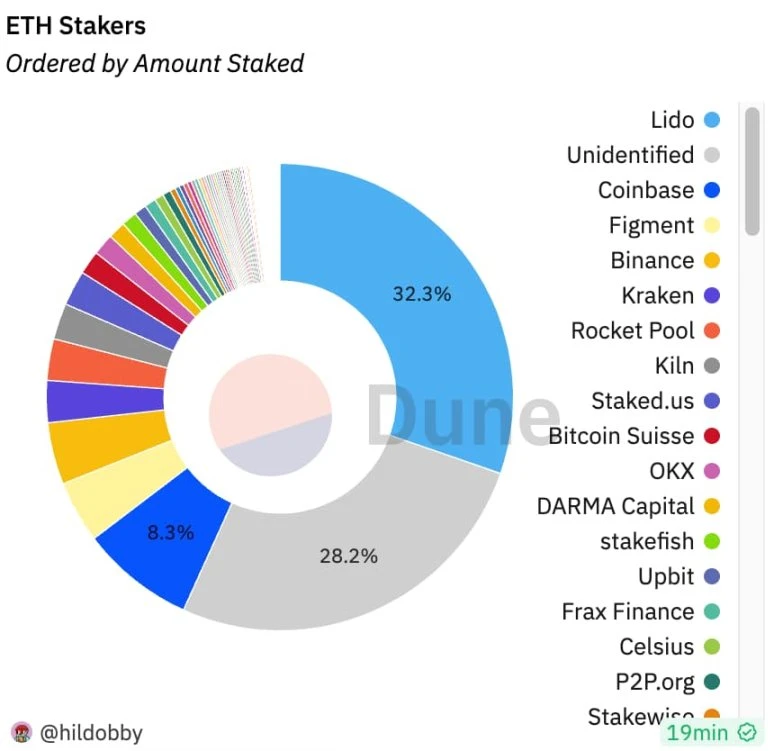
Source: Dune
In light of this, Dankrad Feist believes that the Ethereum community needs some time to figure out the future of Ethereum staking. As a temporary solution, it may be beneficial to reduce the validator churn (the number of validators that can become active validators in each Epoch).
The EIP-7514 proposed by Ethereum developers dapplion.eth and Tim Beiko aims to slow down the growth of validators by limiting the Max Epoch Churn Limit, changing the maximum validator growth rate from exponential growth to linear growth.
If the Ethereum deposit queue remains consistently full, it is expected that by May 2024, 50% of all ETH will be staked. By September 2024, this proportion is expected to rise to 75%, and by December 2024, it may reach 100%. Additionally, as the size of the validator set increases, rewards will decrease. Coupled with the push for liquid staking tokens, the consensus layer will face greater pressure. The increase in the number of validators will lead to an increase in gossip messages and Beacon state size. It is currently unclear how much marginal security benefit comes from additional economic weight.
After comprehensive consideration, the developers suggest limiting the Max Epoch Churn Limit to 8. Assuming the next fork occurs as early as the beginning of the third quarter of 2024, this can significantly reduce the expected scale without causing a significant drop in churn on the expected Dencun fork date. Even if the Dencun fork is delayed, limiting it to 8 can prevent the staking level of 50% of ETH from being reached for at least 1 whole year.
EIP-7514 aims to give the community more time to discuss the development of Ethereum staking and the handling of liquid staking. By limiting the Epoch Churn now, the critical point in the total supply of staked ETH is significantly delayed.
What is the Ethereum validator lifecycle and Churn limit?
Speaking of validators and Churn limit inevitably involves discussing the Ethereum validator lifecycle. In the Ethereum 2.0 Phase 0 validator lifecycle, the activation or exit queue of validators is dynamically restricted. The specific process for validators to join is as follows:
Validators first deposit 32 ETH into the deposit contract. The first step checks if they qualify to enter the activation queue. If they qualify, they enter the activation queue in the next Epoch.
The second step checks if the validator is eligible for activation and within the Churn limit. If they meet the conditions, they will be activated 4 Epochs later.
After activation, validators become active validators and are assigned responsibilities such as executing proofs and proposing in each Epoch, and they receive rewards.
After activation, active validators can voluntarily exit after experiencing 2 to the power of 11 Epochs (about 9 hours). In any voluntary or forced exit, there is a delay of four Epochs before the staker can withdraw. If the validator is penalized, they must wait for 2 to the power of 13 Epochs (about 36 days) before being able to withdraw. If the validator voluntarily exits, they must wait for 2 to the power of 11 Epochs (about 9 hours) before being able to withdraw.
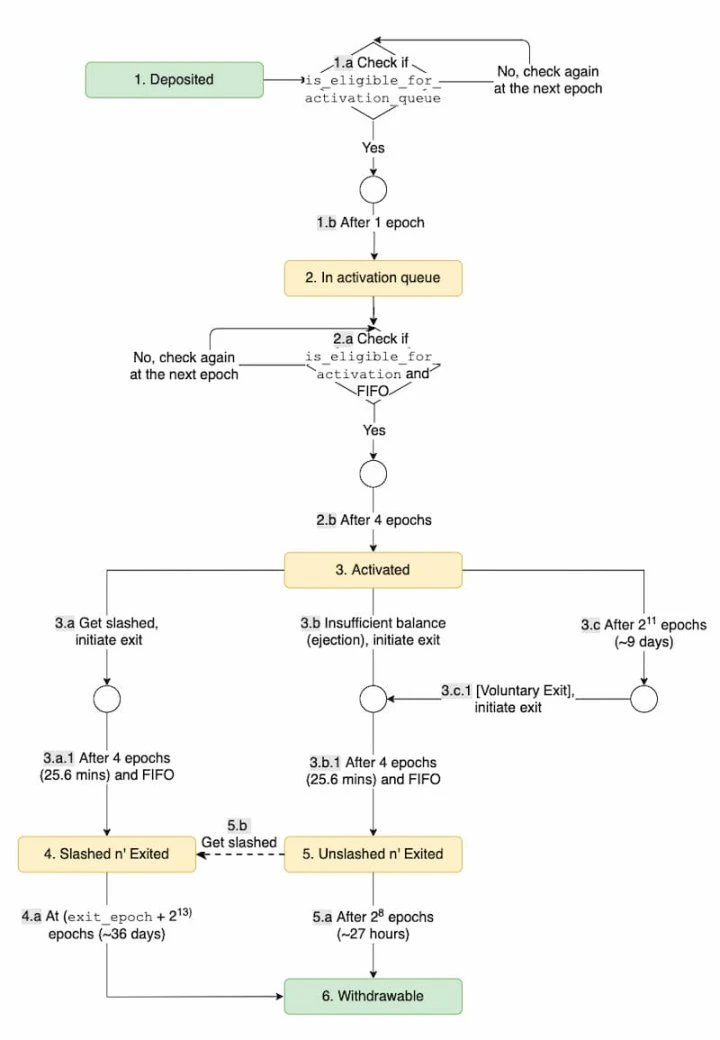
To ensure the stability of the Ethereum consensus mechanism to a greater extent, the number of validators that can become active validators in each Epoch, known as the Churn limit, is restricted. This limit changes based on the number of active validators. When the number of active validators reaches certain critical points, the Churn limit per Epoch increases.
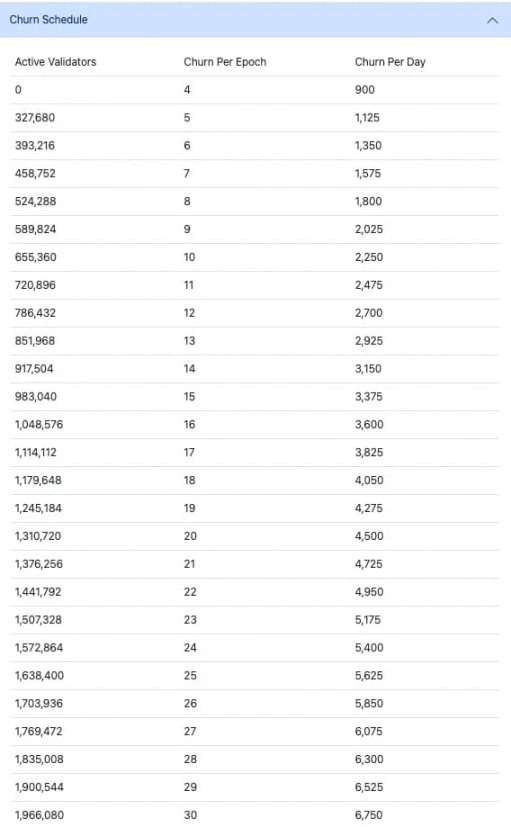
Source: Validator Queue
The current Churn limit for over 800,000 validators is 12 per Epoch, with a daily Churn limit of 2700. This means that if no new validators join, the over 28,000 validators currently in the queue will need more than 10 days to become active validators. In June of this year, the number of validators in the queue reached over 96,000, requiring a waiting time of up to 45 days to join.
How should EIP-7514 be viewed?
Essentially, EIP-7514 aims to slow down the increase in ETH staking rate and gain more time to study solutions before reaching the staking rate critical point. In the author's view, taking preventive measures is more important. However, some community users oppose EIP-7514, believing that it will further increase the concentration of validators.
References:
https://eips.ethereum.org/EIPS/eip-7514
https://notes.ethereum.org/@dankrad/churn-limit
https://notes.ethereum.org/@hww/lifecycle#4-Validator-lifecycle
https://www.validatorqueue.com/
免责声明:本文章仅代表作者个人观点,不代表本平台的立场和观点。本文章仅供信息分享,不构成对任何人的任何投资建议。用户与作者之间的任何争议,与本平台无关。如网页中刊载的文章或图片涉及侵权,请提供相关的权利证明和身份证明发送邮件到support@aicoin.com,本平台相关工作人员将会进行核查。



